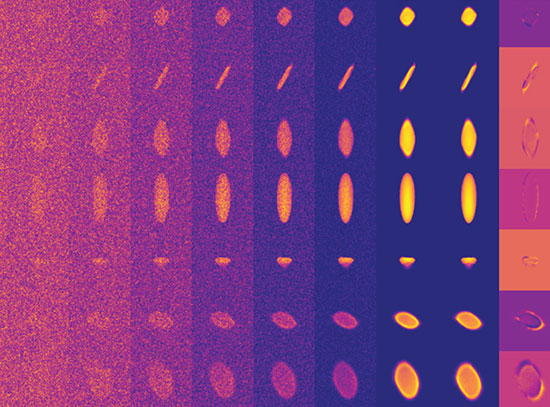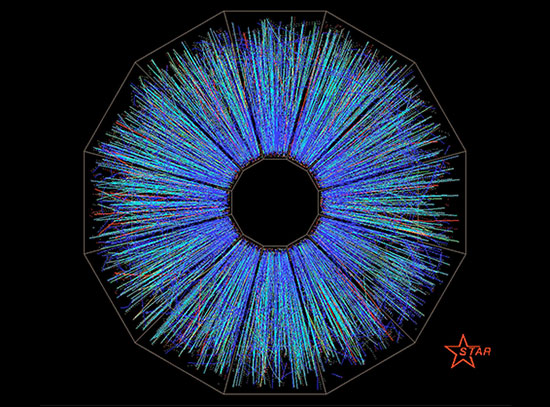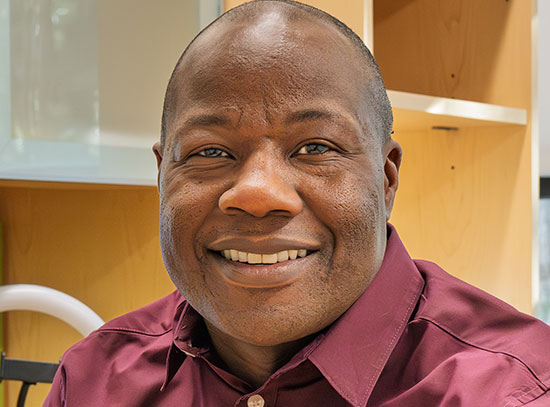Two Professional Organizations Honor Brookhaven Lab's Ralph James
December 3, 2004
UPTON, NY - Ralph James, Associate Laboratory Director for Energy, Environment & National Security at the U.S. Department of Energy's Brookhaven National Laboratory, has been honored for his work on radiation detectors by two professional organizations. The American Association for the Advancement of Science (AAAS) has named James as a Fellow, and the International Conference on Room-Temperature Semiconductor Radiation Detectors (RTSD) has awarded him the RTSD Scientist Award.

Ralph James
With over 134,000 members and 272 affiliated societies comprising more than 10 million members, AAAS is the world's largest federation of scientists. James was among 308 members to be elected as Fellows in 2004. He was cited for his "outstanding scientific contributions to and leadership in materials research leading to the development of wide band-gap compound semiconductors for detecting and imaging X- and gamma radiation."
New AAAS Fellows will be presented with an official certificate and a gold and blue (representing science and engineering, respectively) pin on February 19, at the Fellows Forum during the 2005 AAAS Annual Meeting in Washington, DC.
The International Conference on Room-Temperature Semiconductor Radiation Detectors presents the RTSD Scientist Award every two years. James was presented the 2004 award at the Institute of Electrical and Electronic Engineers' (IEEE) Nuclear Science Symposium and Medical Imaging Conference in Rome, Italy, on October 21. He was honored with the award, which consists of a plaque, for his "extraordinary scientific contributions and leadership in the field of room-temperature semiconductor detectors."
James developed small, portable semiconductor-based radiation detectors that can detect both x-rays and gamma rays very efficiently. The devices can also identify the specific isotopes responsible for the radiation. These detectors have many applications, from medical imaging to detecting the transport of nuclear materials to environmental cleanup.
These radiation detection devices won James Discover magazine's "Innovator of the Year" award in 1997. James is also a three-time winner of R&D Magazine's R&D 100 Award, which honors the top 100 inventions of the year. In 1998, 2000, and 2001, he won the awards for developing the radiation detection devices and for developing a new method to grow semiconductor crystals.
"I am gratified that my accomplishments in the field of radiation detection devices have been acknowledged by two prestigious professional organizations," James said. "I've worked with a talented and dedicated team from the Department of Energy national laboratories, academia and industry to bring the ideas for these devices to tangible tools that can be of use in numerous areas, from national security to medical imaging."
James earned a B.S. in engineering physics from the University of Tennessee at Knoxville in 1976, an M.S. in physics from the Georgia Institute of Technology in 1977, another M.S. in applied physics from the California Institute of Technology (Caltech) in 1978, and a Ph.D. in applied physics from Caltech in 1980. He was a Eugene P. Wigner Fellow at Oak Ridge National Laboratory from 1981-84, and in 1984, he joined the staff of Sandia National Laboratories. In June 2001, James came to Brookhaven Lab to assume his current position as Associate Director for Energy, Environment & National Security. He oversees a wide range of basic and applied research, including the development of counter-terrorist technologies.
James holds nine patents, has authored more than 280 scientific publications and 11 book chapters, and edited 10 books. In addition, he is recognized for a long history of dedicated mentorship and for leadership contributions to professional societies. For example, he has served as the chair of 15 international conferences sponsored by scientific and engineering societies. In addition to being an AAAS Fellow, James is a Fellow of the IEEE, the American Physical Society and the International Society for Optical Engineering.
2004-10250 | INT/EXT | Newsroom









